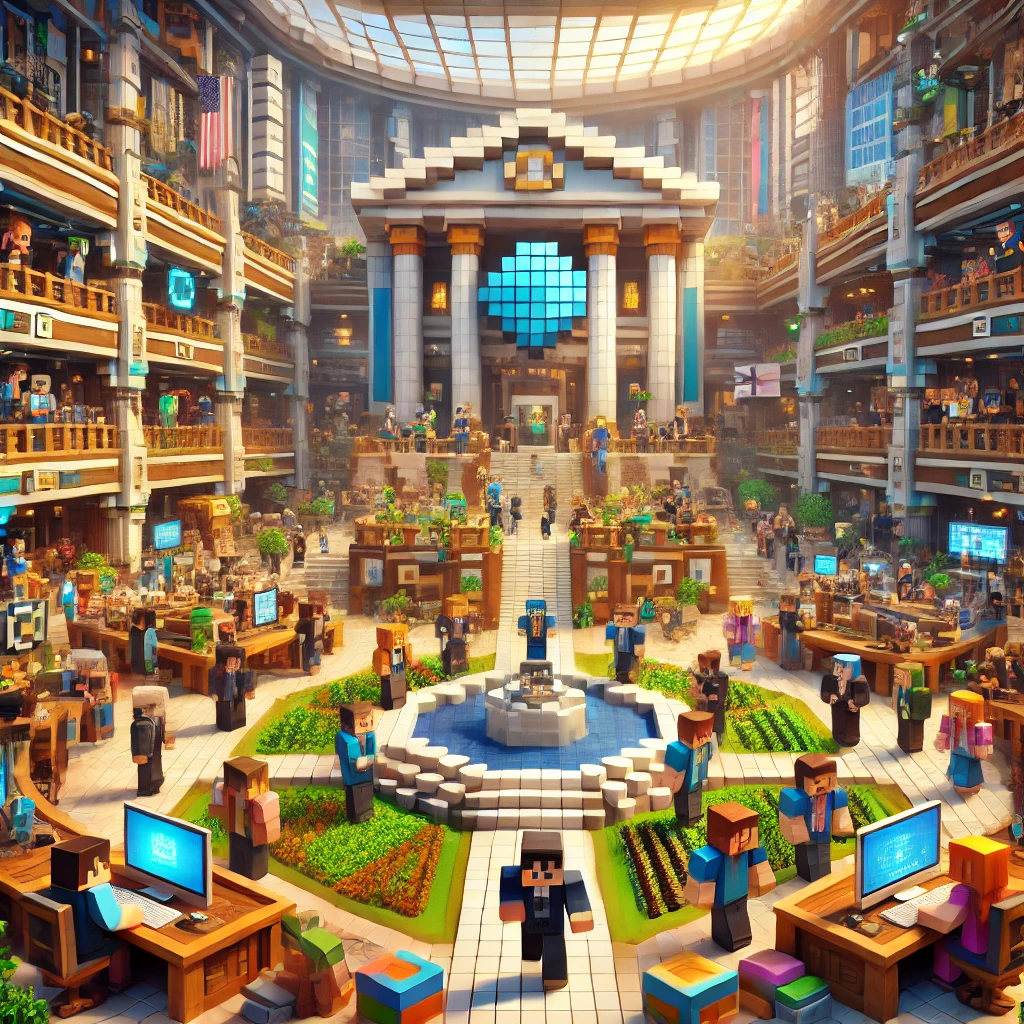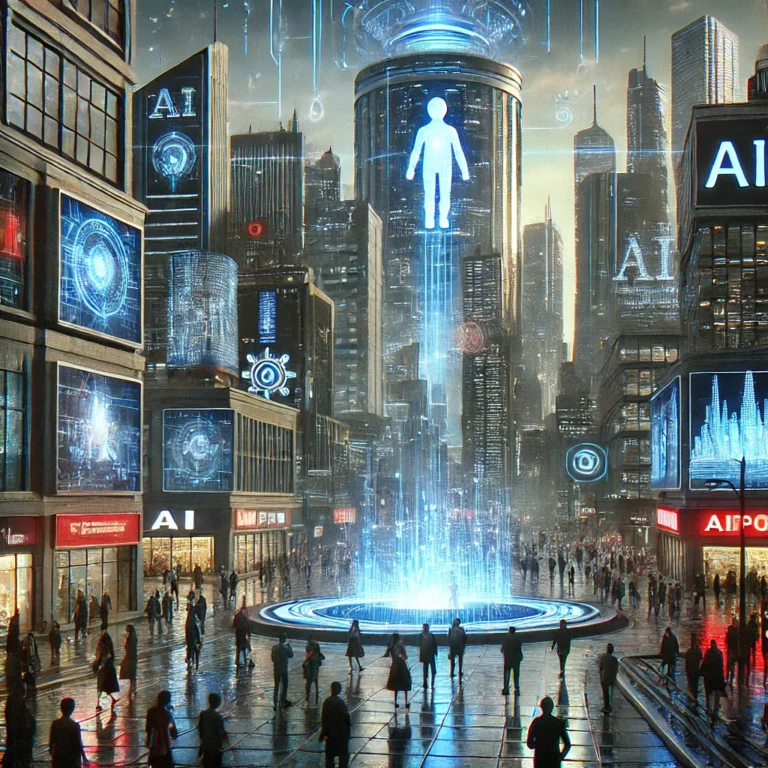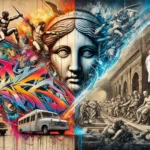Minecraft is an open-world sandbox game in which players explore, build, and survive in a procedurally generated landscape. With no set goals, it allows players to create their own worlds, whether through cooperative ventures, competitive gameplay, or simply aimless wandering. Since its release in 2011, Minecraft has become one of the most popular games of all time, attracting players of all ages. For those unfamiliar with the game, the official website provides a useful introduction.
What makes Minecraft sociologically fascinating is not just its popularity, but how it unintentionally serves as a virtual experiment in social organisation. Players must navigate the tension between freedom and order, cooperation and conflict, ownership and the common good. Yet, while Minecraft provides an intriguing parallel to real-world society, it is equally important to recognise where the analogy falls apart. The game, after all, remains just that—a game.
From Anarchy to Order: The Spontaneous Development of Social Structures
At its core, Minecraft presents a world without laws, government, or economic systems. Each new world is a clean slate, devoid of pre-existing social structures. Much like Hobbes’ (1651) famous description of the state of nature, early gameplay is often a war of all against all, where survival is the primary concern. This remains a solitary struggle in single-player mode, but in multiplayer mode, the social dimension becomes immediately apparent. Players quickly realise that unchecked anarchy is unsustainable. While it may be possible to exist as a lone wanderer, success—particularly in survival mode—becomes much easier with cooperation. Shared resources, division of labour, and even rudimentary rules emerge as a means of making life easier. It is at this point that Minecraft begins to mirror the social contract theories of Hobbes, Locke (1689), and Rousseau (1762).
However, the move from anarchy to order is not uniform across servers. Some communities thrive under cooperative structures, while others succumb to conflict and division. Weber’s (1922) typology of authority—traditional, charismatic, and rational-legal—provides a useful framework for understanding governance within Minecraft servers. Many servers begin with charismatic authority, where a single skilled player or administrator assumes leadership.
Over time, some evolve into traditional authority structures, with long-term players exerting influence based on tenure. More complex servers attempt to implement rational-legal authority, with formalised rules and enforcement mechanisms. Yet, unlike in real life, where Weber argues bureaucracy becomes entrenched, Minecraft governance remains fluid. However, this fluidity is relative—on large, well-established servers, bureaucracies can become deeply embedded, mirroring real-world institutions with entrenched administrative hierarchies and strict rule enforcement.
Some scholars, such as Taylor (2012), argue that digital spaces evolve to mimic traditional institutions, reflecting a broader pattern in online governance. This structured environment can be reinforced by plugins that automate governance mechanisms, introducing judicial systems, taxation, and penal codes. The deliberate selection and application of these modifications highlight the flexibility of governance models in virtual worlds, showcasing both libertarian and interventionist approaches to digital rulemaking.
From a functionalist perspective, social structures in Minecraft serve specific functions that contribute to the stability of the virtual world. Durkheim’s (1893) concept of social solidarity can be observed in multiplayer servers, where cooperation fosters a sense of belonging and shared purpose. Mechanical solidarity, based on shared values and collective experiences, is evident in smaller, close-knit servers where mutual reliance is strong. In contrast, larger servers with division of labour, specialisation, and trade reflect Durkheim’s notion of organic solidarity, where interdependence replaces shared norms as the basis of social cohesion. Even griefing and conflict serve latent functions, reinforcing social boundaries and strengthening collective identity through the enforcement of norms and rules.
Shaping Digital Governance Decisions
While the base game provides only minimal enforcement mechanisms, additional plugins allow server operators to modify the world in ways that introduce formalised structures. Features such as land protection, in-game economies, and legal systems are all made possible through a range of plugins, and their implementation is a conscious choice by administrators. This reflects the work of scholars like Couldry (2012), who explore the ways in which digital governance is intentionally designed to enforce order in online communities.
Some servers employ plugins that automate governance, creating judicial systems with player-enforced laws, taxation mechanisms, and penal codes. Others use plugins to decentralise control, allowing players to participate in decision-making through voting systems. The deliberate selection and application of these modifications highlight the flexibility of governance models in virtual worlds, showcasing both libertarian and interventionist approaches to digital rulemaking.
The Enclosure of the Digital Commons
As governance structures emerge, so too does the question of ownership and resource distribution. In theory, Minecraft worlds begin as vast, unclaimed landscapes where players are free to build anywhere. Yet, as in real life, territorial instincts quickly take hold. Land is marked, fenced off, and defended against intruders. What begins as a shared space rapidly transforms into a patchwork of individual holdings, reflecting the historical process of enclosure (Thompson, 1963). While many servers follow this trajectory, some communities deliberately resist it, fostering communal resource-sharing or cooperative projects in an attempt to sustain a digital commons.
A Marxist perspective would view this shift as a digital manifestation of primitive accumulation (Marx, 1867), wherein shared resources become controlled by a minority, forcing others into forms of digital labour. While Minecraft lacks a true capitalist mode of production, the emergence of economic disparities, wage-like structures, and monopolisation of prime locations suggests an approximation of real-world capitalist dynamics. However, unlike real-world capitalism, where individuals are often trapped within rigid economic structures, Minecraft offers an escape hatch. This differs from Massively Multiplayer Online Role-Playing Games (MMORPGs) like EVE Online or World of Warcraft, where in-game economies are sophisticated and resemble real-world capitalist systems with market fluctuations, labour markets, and monopolisation that players cannot simply opt out of without abandoning significant progress. The fact that ownership develops at all is less a reflection of economic necessity and more a testament to the human tendency to impose structure on an unstructured environment.
Conclusion
Minecraft is a compelling case study in the spontaneous development of social structures, demonstrating how governance, property rights, and social contracts emerge even in the absence of formal institutions. However, it is equally important to recognise its limitations as a sociological model. Unlike real societies, Minecraft lacks material constraints, long-term consequences, and involuntary participation. Yet, as digital governance becomes increasingly relevant in online spaces and the metaverse, the study of Minecraft may offer insights into broader discussions of governance, authority, and the future of digital societies.
Looking beyond Minecraft, virtual worlds and online communities are becoming increasingly complex, with governance structures that mirror, challenge, and even surpass real-world systems. Platforms like Decentraland, Second Life, and blockchain-based metaverse projects experiment with decentralised governance models, blurring the line between digital and political citizenship. As virtual spaces grow in social and economic significance, questions of governance, digital rights, and enforcement mechanisms will become ever more pressing. Scholars such as Zuboff (2019) have explored how digital surveillance influences governance structures, while Zuckerman (2020) discusses the potential for online democratic governance models that challenge traditional hierarchies. How much power should server administrators or platform owners wield? Will online communities shift towards democratic governance, or will digital oligarchies dominate?
Minecraft offers a microcosm of these broader trends, illustrating both the possibilities and the fragility of virtual governance. If anything, it serves as both a simulation and an escape—a world where human nature plays out, but where no one is ever truly trapped by the system they find themselves in. As digital societies continue to evolve, the lessons learned from Minecraft may help shape the structures of governance that define the next era of online interaction.







